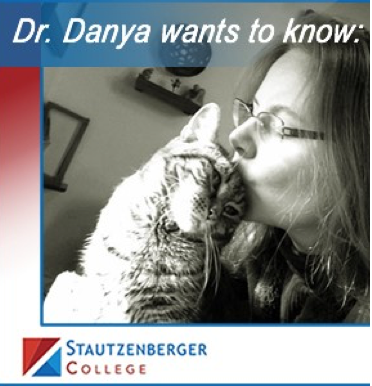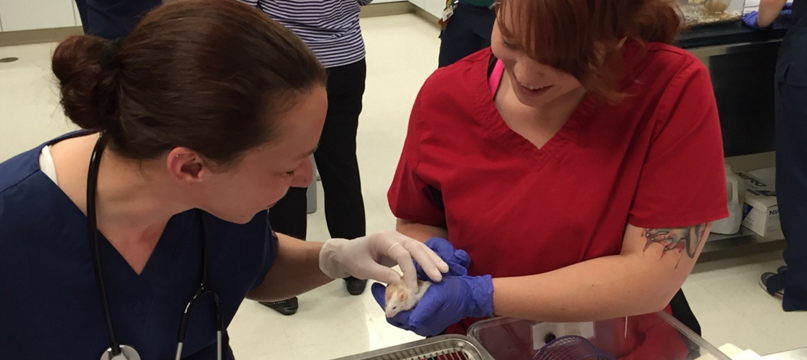Why Do Americans Still Cut Off the Toes of Their Friends?
To put this more delicately, why are we still declawing cats? I specify ‘Americans’ because we are one of the only “Civilized” nations left in which this procedure is legal. Veterinarians and vet techs in 20 plus other countries don’t even learn this in school.
Take heart: we are starting to catch up. There is greater public awareness and education, legislation in some California cities banning the procedure and now New York state considering a state-wide ban, but our progress has been agonizingly slow. I credit my friend and colleague Dr. Jennifer Conrad who is the founder and director of The Paw Project, for her relentless dedication to helping cats, and helping us move forward.
What does it mean to declaw a cat?
The declaw surgery is a series of 10 amputations, one per each front toe. If you hold up your hand, grab your fingertip and wiggle it, the point at which your finger would be amputated if you were being declawed is that first joint you see bend. This is widely considered one of the most painful surgical procedures in veterinary medicine. But we still do it.
Why might someone declaw a cat?
I wish I knew.
I blame my own profession, veterinary medicine, for the fact that declaw surgeries continue. Pet owners who are concerned about cats scratching them, their furniture or carpets often seek advice from a logical source: their veterinarian. Our clients trust us. They do what we say.
Though more and more veterinarians are refusing to declaw, many still perform the surgery. Some see it as a necessary evil, a last resort after trying to modify behavior. Some see it as a perfectly acceptable part of routine care, even though this surgery offers no benefit to the patient; it only does harm both in the short term and the long term. We are supposed to ‘Do no harm’.
What sort of harm can come from declawing?
The immediate physical ramifications of pain, bleeding, risk of infection etc. have been well recognized for some time. In more recent years we are starting to understand the longer range and more permanent issues like regrowth of nail or bone, osteoarthritis, bone infection and altered gaits. Declawed cats are also reportedly more likely to bite, and to eliminate in places other than their litter boxes, BOTH rather unpopular attributes.
What’s up with cats scratching anyway?
Dogs bark and dig. Birds fly and make lots of noise. Gerbils burrow and nest. Sheep and cows take comfort in staying in groups. Cats scratch.
When we take away a cat’s ability to scratch, we take away part of a cat being a cat. Cats use their scratching as a way to leave both a visual and a scent mark on their territory, and feel secure in their space. Scratching helps stretch and exercise the muscles and joints from the toes all the way through the back. Those front claws also serve as a cat’s first line of defense should he or she feel threatened. Cats often scratch as a greeting, or when they are happy or excited. Cats scratch.
What can we do instead of declawing?
Let cats scratch. We can help redirect a cat to scratch more on what we want them to scratch, and less what we DON’T want them to scratch.
Buy or make big, inviting sturdy cat trees and scratching posts. Use cat nip, snacks and toys to make it clear those places are really fun to scratch and climb.
Know what and how your cat likes to scratch. Some prefer carpet, some wood, some canvas, some cardboard. Many cats like to scratch both horizontal and vertical surfaces, so offer both.
Make your stuff less inviting! You can use upside down plastic carpet guards which are no fun to walk in, double sided tape which is no fun to put paws on, deterrent sprays and scents which are no fun to smell.
Punishing your cat will not work. Chances are your cat will just learn to fear you, a seemingly crazy person who screams at him when all he is doing is trying to have a good time. If you punish, our pets are also great at learning to simply wait until you leave the room to resume whatever behavior it was you so rudely interrupted.
Trim nails! Need help? Ask a friend, your vet or vet tech. If you got your cat from a local shelter, ask them for advice. Some places will even trim nails for FREE in an effort to help cats keep their claws.
Back to basics:
Please take a moment to think about what it really means to declaw your cat, someone you love and have accepted the responsibility to protect. It means to subject her to multiple surgical amputations because she does something – or might someday do something – that annoys you.
Is that logical? Is it even remotely humane?
Don’t take my word for all of this! Want to learn more? Check out the resources and information below:
· NIH 2016 guidelines for HIV infected individuals: https://aidsinfo.nih.gov/contentfiles/lvguidelines/adult_oi.pdf
· Bartlett JG, Finkbeiner AK. The Guide to Living with HIV Infection: Developed at the Johns Hopkins AIDS Clinic. (Page 88) https://www.amazon.com/Guide-Living-HIV-Infection-Developed/dp/0801884861
· The Paw Project: http://www.pawproject.org/
· Dr. Jeane Hofve, Little Big Cat: http://www.littlebigcat.com/category/declawing/
· Ingrid Johnson, Fundamentally Feline Behaviorist: http://www.fundamentallyfeline.com/
Learn more! Learn what you love, and love what you do.
· Talk to us about working with animals in any aspect of animal care or animal welfare, or just to learn more about our amazing animal rescue partners.
· Stautzenberger College offers diploma and degree programs in Animal Sciences.
In addition to diploma and degree programs, Stautzenberger College also offers short, sweet & cheap certificate courses for members of the community, like our Animal Warden, Animal Control Officer program which provides attendees the opportunity to learn about animal health, animal behavior and animal law.

Written by: Danya Linehan, DVM
Danya Linehan has been working with animals since 1983, practicing veterinary medicine since 1993, and has been a proud member of the Stautzenberger College Family since 2006. (Danya Linehan is old). Dr. Danya is the Program Chair for Animal Welfare and Management Program with the College.
As the part time shelter veterinarian at Cat Welfare Association, she is part of an amazing animal welfare team.
Danya shares her home, her rescue mission and her life with fellow animal advocate Mike Parks. Mike and Danya are owned by a lively crew of cats; they are currently one cat shy of being the crazy cat couple.
#college #animalscience #sctoday

